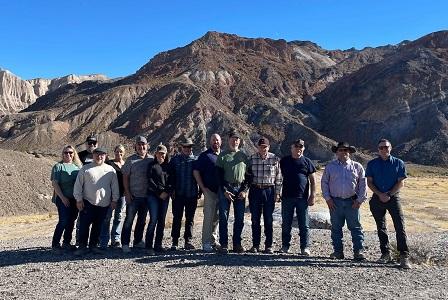BLM to host Desert Advisory Council meeting in July
PALM SPRINGS, Calif. – The Bureau of Land Management will host a virtual public meeting of the BLM California Desert District Advisory Council on Saturday, July 12, from 9 a.m.- 1 p.m. The meeting will be held via Microsoft Teams with a public comment period scheduled at 9:30 a.m.
The Desert Advisory Council meeting will include a presentation on the U.S. Forest Service’s San Bernardino National Forest recreation fee proposal and DAC vote, and an overview on Administrative Orders. The five field offices and fire program will also report on their activities.
Meeting participants must register through Microsoft Teams. Upon registering, participants will receive an email including the meeting link and dial-in numbers. Participants may need to download the Teams app prior to the meeting, if joining via phone. Here are some tips on how to use Microsoft Teams.
The public will have the opportunity to address the Desert Advisory Council during the public comment period and time for individual comments may be limited due to the number of persons wishing to speak. Written comments may also be emailed in advance of the meeting to [email protected] and will be recorded in the meeting minutes.
Advisory councils, such as the Desert Advisory Council, provide advice and recommendations for BLM consideration on resource and land-management issues within the agency. These citizen-based councils consist of 10 to 15 members from diverse interests in local communities who assist in the development of committee recommendations that address public land management issues.
The agenda for the meeting is posted on the BLM website at: https://www.blm.gov/sites/default/files/docs/2025-06/CDD_DAC_Agenda_7.17.2025_508.pdf.
The BLM manages about 245 million acres of public land located primarily in 12 western states, including Alaska, on behalf of the American people. The BLM also administers 700 million acres of sub-surface mineral estate throughout the nation. Our mission is to sustain the health, diversity, and productivity of America’s public lands for the use and enjoyment of present and future generations.

